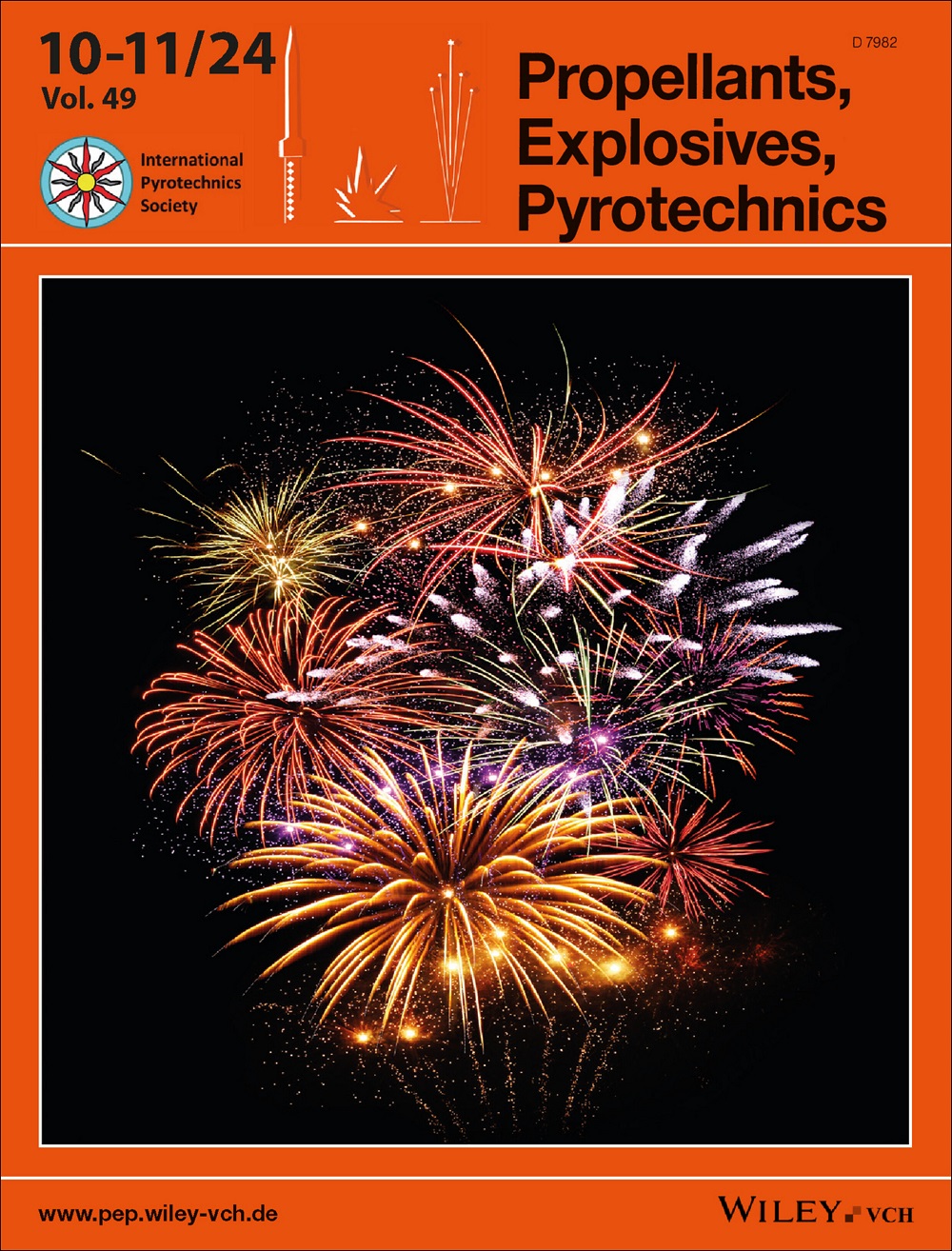模拟和制造用于可控能量响应的反应超材料
IF 2
4区 工程技术
Q3 CHEMISTRY, APPLIED
引用次数: 0
摘要
我们进行了模拟和实验,通过在含有嵌入式致密颗粒(钽棒)阵列的硝基甲烷局部区域捕获能量来控制从冲击到爆破的转变。这些局部区域是添加式制造的,设计时使用了 ALE3D 进行模拟,该模拟使用了爆炸物的点火和增长反应流模型。建模结果表明,当钽棒存在时,反应性会增强,从而导致爆炸,而在没有钽棒的情况下,相同强度的冲击不会发生爆炸。使用弗里茨平面波透镜将各种输入冲击波驱动到系统中,进行了证实模拟预测的实验。光子多普勒测速仪是用于测量冲击输入和反应进程的主要诊断方法。这些结果表明,在设计炸药时,有可能在不敏感的材料中局部增加对冲击加载的敏感性,从而提高实战高能材料的整体安全性。本文章由计算机程序翻译,如有差异,请以英文原文为准。
Simulation and fabrication of reactive metamaterials for controllable energy response
Simulations and experiments were conducted to control the shock‐to‐detonation transition by energy trapping in localized regions of nitromethane that contained arrays of embedded dense particles (tantalum rods). The localizations were additively manufactured and designed with simulations carried out with ALE3D, that used the ignition and growth reactive flow model for the explosive. Modelling demonstrated enhanced reactivity when the tantalum rods were present, leading to a detonation that otherwise did not occur for the same strength shock without rods. Experiments that confirmed predictions of the simulation were conducted using Fritz plane wave lenses to drive various input shocks into the system. Photon doppler velocimetry was the primary diagnostic used to measure shock input and reaction progression. These results suggest that it is possible design explosives to localize sensitivity to shock loading within an insensitive material increasing the overall safety of fielded energetic materials.
求助全文
通过发布文献求助,成功后即可免费获取论文全文。
去求助
来源期刊

Propellants, Explosives, Pyrotechnics
工程技术-工程:化工
CiteScore
4.20
自引率
16.70%
发文量
235
审稿时长
2.7 months
期刊介绍:
Propellants, Explosives, Pyrotechnics (PEP) is an international, peer-reviewed journal containing Full Papers, Short Communications, critical Reviews, as well as details of forthcoming meetings and book reviews concerned with the research, development and production in relation to propellants, explosives, and pyrotechnics for all applications. Being the official journal of the International Pyrotechnics Society, PEP is a vital medium and the state-of-the-art forum for the exchange of science and technology in energetic materials. PEP is published 12 times a year.
PEP is devoted to advancing the science, technology and engineering elements in the storage and manipulation of chemical energy, specifically in propellants, explosives and pyrotechnics. Articles should provide scientific context, articulate impact, and be generally applicable to the energetic materials and wider scientific community. PEP is not a defense journal and does not feature the weaponization of materials and related systems or include information that would aid in the development or utilization of improvised explosive systems, e.g., synthesis routes to terrorist explosives.
 求助内容:
求助内容: 应助结果提醒方式:
应助结果提醒方式:


